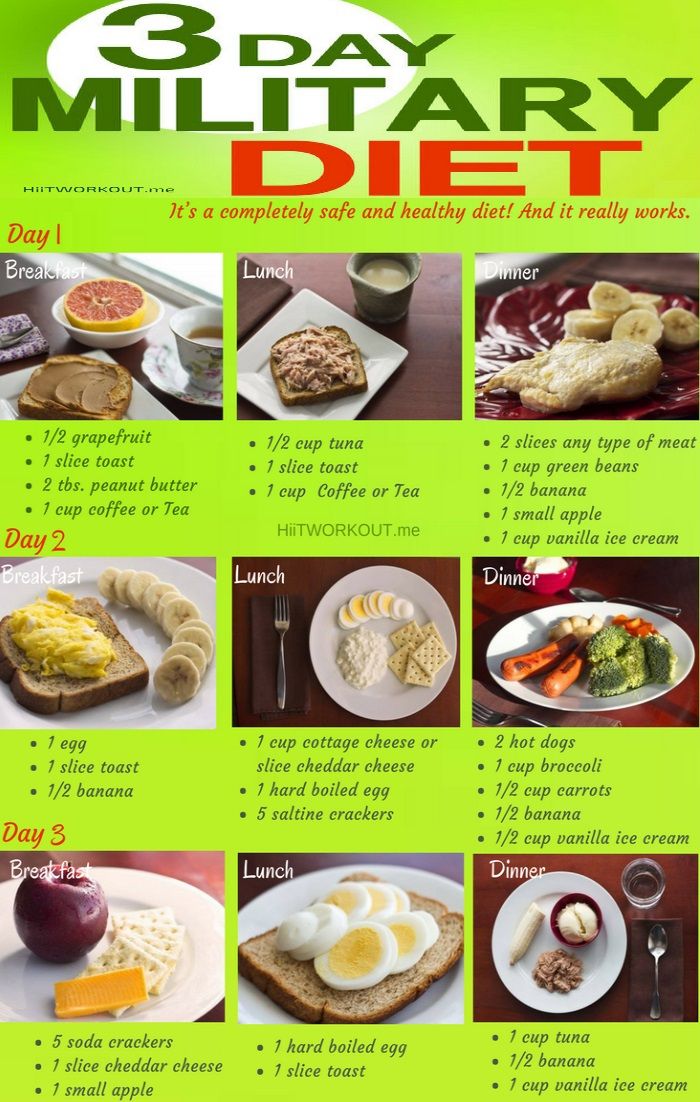
It can be difficult to keep your family's eating habits in check. But the rewards are well worth it. It is possible to incorporate healthier foods into your family's everyday routine. These healthy food options are suitable for all ages. These foods are easy to prepare, and they're fun to eat. You can add fruits and vegetables to your meals, or switch from white flour to whole oats. There are so many healthy recipes that you can prepare and enjoy.
You should stick to at least one or two healthy meals per day. Start by replacing your regular meals with these new options. This may seem daunting, but it will pay off in long term. Two healthy meals per week is a goal. Make them enjoyable to make! Make sure you have time to cook family meals together, away from the television, phone, and ipad. You must set an example so that your children will follow your lead.

Engaging your family in cooking is a great way of encouraging them to eat healthier meals. Have your children participate in mealtime by helping you cook, and reward them with healthy food! You may be surprised to learn that they'll actually like to eat a meal that isn't stuffed with unhealthy foods. This will encourage them to eat healthy and make better food choices. This is a great idea to get your family on the right track to a healthier lifestyle that will last years.
A healthier lifestyle can be achieved by making small changes to your diet. Try switching to whole grain if it's difficult to make changes. This includes whole-wheat, rye, brown rice and oatmeal as well as popcorn, cereal, and popcorn. Use liquid vegetable oils instead of butter or other solid fats. These foods can add up so make sure you don't skimp on them! You will be amazed at the difference it makes!
Although it might seem daunting, there are simple ways to make your family's food healthier. You can make your family healthier by eating whole grains like whole-wheat (whole-wheat and rye), decreasing the amount of dairy in your home, and increasing the intake of fruits, vegetables, and other healthy habits. This is a great way to help your kids make better food choices.

Your family will be happier if you change your family's eating habits. It's a great way for children to be creative about eating. In addition to eating more fruits and vegetables, you'll be more likely to get your kids to eat more veggies and whole-wheat products. You can make small changes to ensure a healthy meal for the whole family.
FAQ
What should I eat?
You should eat lots of vegetables and fruits. These vegetables and fruits are rich in vitamins and minerals that will keep your immune system strong. Vegetables and fruits are high in fiber which helps to digest and fill you up. At least five servings of fruits and vegetables should be consumed each day.
Make sure you drink plenty of water too. Water flushes out toxins and helps you feel full between meals. Drink about eight glasses each day.
Refined grains should be replaced with whole grains. Whole grains retain all nutrients including B vitamins, iron and zinc as well as calcium, magnesium, calcium, protein, and magnesium. Refined grains are stripped of some of their nutritional value.
Avoid sugary drinks. Sugary drinks are full of empty calories and lead to obesity. Instead, opt for water, milk, or unsweetened tea.
Avoid fast food. Fast food has little nutritional value. While it might taste good, it won't give your body the energy it needs to function properly. Choose healthier options like salads, soups and sandwiches as well as pasta dishes.
Reduce your alcohol intake. Alcohol is a poor nutrient and has empty calories. Limit the number of alcoholic beverages you consume per week to no more that two.
Red meat should be cut down. Red meats are high-in saturated fat and cholesterol. Opt for lean cuts of beef, pork, lamb, chicken, fish, and turkey instead.
What are 10 healthy lifestyle habits?
-
Eat breakfast every day.
-
Don't skip meals.
-
Be balanced.
-
Drink plenty of water
-
Take care your body.
-
Get enough sleep.
-
Avoid junk food.
-
Do some form of exercise daily.
-
Have fun!
-
Find new friends
How much should I weight for my height and age? BMI calculator and chart
Calculating your body mass index (BMI), is the best method to calculate how much weight to lose. A healthy BMI range is between 18.5 and 24.9. Aim to lose 10 pounds per month if your goal is to lose weight. Enter your weight and height into the BMI calculator.
This BMI chart shows you if it is possible to identify if you are either overweight or obese.
Why does weight change as we age?
How do I know if my bodyweight changes?
Weight loss happens when there is less muscle mass and more fat. This means that calories must be consumed at a rate greater than energy. A decreased level of activity is the main cause of weight loss. Other causes include illness, stress, pregnancy, hormonal imbalances, certain medications, and poor eating habits. Weight gain is when there are more calories than muscle mass. This happens when people consume more calories than they burn during the day. There are many reasons for this, including overeating and increased physical activity.
The primary reason we lose weight is that we consume less calories than what we burn. Regular exercise increases metabolism, which means that we burn more calories per day. But, this does not mean that we will be thinner. It is important to know if we are losing weight or gaining muscle. If we're burning more calories than we're consuming then we're going to lose weight. But if we're consuming more calories than we're burning, then we're actually storing them as fat.
As we get older, our movement speed slows down and so we move less. We also tend to consume less food than when we were younger. Also, we are more likely to gain weight. On the flipside, we are more muscular than we really need and appear bigger.
There's no way to tell how much weight you've lost unless you weigh yourself every week. There are many methods to measure your weight. You can also measure your waist, hips or thighs. Some people prefer to use a bathroom scale while others prefer to measure with tape.
If you want to track your progress, you should try weighing yourself once a week and measuring your waistline once a month. You can also take pictures of yourself every few months to see how far you've come.
You can also check your height online to find out how many pounds you have. If you are 5'10" tall, and you weigh 180 lbs, then you would probably weigh 180 lbs.
Statistics
- WHO recommends reducing saturated fats to less than 10% of total energy intake; reducing trans-fats to less than 1% of total energy intake; and replacing both saturated fats and trans-fats to unsaturated fats. (who.int)
- This article received 11 testimonials and 86% of readers who voted found it helpful, earning it our reader-approved status. (wikihow.com)
- According to the 2020 Dietary Guidelines for Americans, a balanced diet high in fruits and vegetables, lean protein, low-fat dairy and whole grains is needed for optimal energy. (mayoclinichealthsystem.org)
- nutrients.[17]X Research sourceWhole grains to try include: 100% whole wheat pasta and bread, brown rice, whole grain oats, farro, millet, quinoa, and barley. (wikihow.com)
External Links
How To
What does the meaning of "vitamin?"
Vitamins can be described as organic compounds found in food. Vitamins are essential for our bodies to absorb nutrients from the foods we eat. Vitamins cannot come from the body so food must provide them.
There are two types if vitamins: water soluble, and fat soluble. Water-soluble vitamins dissolve easily when they are dissolved in water. Examples include vitamin C,B1 (thiamine), B2 (riboflavin), B3 (niacin), B6 (pyridoxine), folic acid, biotin, pantothenic acid, and choline. Fat soluble vitamins are stored in the liver and fatty tissue. These include vitamin D, E and K, as well as beta carotene.
Vitamins are classified according to their biological activity. There are eight major types of vitamins:
-
A – Essential for normal growth, and the maintenance of good health.
-
C – essential for proper nerve function.
-
D - Vital for healthy bones and teeth
-
E - needed for good vision and reproduction.
-
K - Required for healthy nerves and muscles.
-
P - Essential for strong bones and teeth.
-
Q - aids digestion, absorption and absorption iron
-
R - Red blood cells are made from red blood cells.
The recommended daily allowance (RDA), for vitamins, varies depending upon age, gender, or physical condition. The U.S. Food and Drug Administration (FDA) sets the RDA values.
For example, the RDA for vitamin A is 400 micrograms per dayfor adults 19 years or older. Pregnant women require 600 micrograms daily to support fetal development. Children ages 1-8 require 900 micrograms per day. Children under 1 year old require 700 micrograms daily, while infants over one year old need 500 micrograms every day. This decreases between 9 and 12 months.
Children aged between 1-18 years require 800 micrograms of sugar per day, while overweight children need 1000 micrograms. Children who are underweight receive 1200 micrograms every day to meet their nutritional requirements.
2200 mg of vitamin A per day is required for children aged 4-8 who have been diagnosed by anemia.
Adults over 50 years of age need 2000 micrograms per day for general health. Women who are pregnant or breastfeeding need 3000 micrograms per day due to increased nutrient requirements.
1500 micrograms is the recommended daily intake for adults aged 70+, who lose approximately 10% of muscle each year.
Women who are pregnant or lactating need more than the RDA. Pregnant woman need 4000 micrograms daily in pregnancy, and 2500 per day after childbirth. Breastfeeding moms need 5000 micrograms each day when breastmilk production occurs.